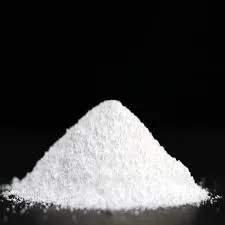Ingredients in Pharmaceutical Products An Overview
The pharmaceutical industry plays a pivotal role in healthcare, offering medications that treat a range of diseases and conditions. At the heart of these products are the ingredients that make them effective and safe for consumption. Understanding these ingredients is essential to grasp how pharmaceutical products function and their impact on public health.
Active Pharmaceutical Ingredients (APIs)
The cornerstone of any pharmaceutical product is the Active Pharmaceutical Ingredient (API). An API is the substance in a drug that provides therapeutic effects. For instance, in a pain reliever, the API is the compound that alleviates pain. APIs can be derived from various sources, including plants, animals, and synthetic processes. The development of APIs involves stringent research and development to ensure they are effective and safe for patients.
The manufacturing process of APIs is complex, involving multiple steps, including synthesis, extraction, and purification. Stringent quality control measures are essential at every stage to ensure the final product is free of contaminants and meets regulatory standards. For example, the Food and Drug Administration (FDA) sets guidelines that pharmaceutical companies must adhere to during the production of APIs.
Excipients The Unsung Heroes
While APIs are responsible for the therapeutic effects of medications, excipients play a crucial but often overlooked role. Excipients are inactive substances that serve a variety of functions, including aiding the drug's delivery, stability, and absorption. They can also enhance the appearance and taste of medications, making them more palatable for patients.
Common excipients include fillers, binders, preservatives, and coloring agents. For example, lactose is frequently used as a filler in tablets, while magnesium stearate acts as a lubricant to ensure uniformity during manufacturing. The choice of excipients must be carefully considered, as they can interact with the APIs and affect the drug's performance. As such, excipients undergo rigorous testing to validate their safety and compatibility with the intended API.
Formulations The Final Product
The formulation of a pharmaceutical product is the stage where APIs and excipients are combined to create the final medication. This process requires expertise in chemistry and pharmacology, as the formulation must ensure that the API is released effectively into the body. Various dosage forms exist, including tablets, capsules, injections, creams, and ointments, each designed for specific therapeutic purposes and routes of administration.
ingredients in pharmaceutical products

Formulation scientists must consider factors such as bioavailability, stability, and patient compliance when developing a product. For instance, a drug administered through injection may require a different formulation than one taken orally. Moreover, developing formulations for specific patient populations, such as pediatrics or geriatrics, can present unique challenges.
Regulatory Compliance and Safety
The pharmaceutical industry is heavily regulated to ensure the safety and efficacy of its products. Regulatory bodies like the FDA in the United States and the European Medicines Agency in Europe require extensive testing and documentation before a medication can be approved for public use. This process includes clinical trials that assess the drug's safety, efficacy, and potential side effects.
Post-marketing surveillance is also critical. After a drug is approved, it is continuously monitored for adverse effects, and manufacturers are required to report any significant issues. This vigilance helps maintain public safety and ensures that any problems are addressed swiftly.
Future Trends in Pharmaceutical Ingredients
As the pharmaceutical industry evolves, so too do the ingredients and formulations used in medications. Advances in technology and biotechnology are paving the way for novel APIs and excipients. Personalized medicine, which tailors treatments to individual patients based on genetic and biochemical profiles, is becoming more prevalent. This approach could lead to the development of more effective medications with fewer side effects.
Additionally, the industry is increasingly focusing on sustainability. The use of biodegradable excipients and environmentally friendly manufacturing processes is gaining traction, as companies aim to reduce their environmental impact.
Conclusion
Ingredients in pharmaceutical products are integral to the development of safe and effective medications. Understanding the distinction between active ingredients and excipients, as well as the complexities of formulations and regulatory compliance, is crucial for anyone involved in the pharmaceutical industry. As the field continues to innovate, these ingredients will play a vital role in shaping the future of medicine and improving patient outcomes worldwide.

